We all know that our dogs love to explore the outdoors, sniffing and tasting everything they encounter.
But there are many critters and plants that may pose a risk to our furry friends, and one such critter is the humble snail.
Not all snails are dangerous, but certain species can cause health problems for dogs.
In this article, we’ll talk about snails that can be harmful to your pooch, where they can be found, and the risks they present. Remember, knowledge is the key to keeping your dog safe and healthy!
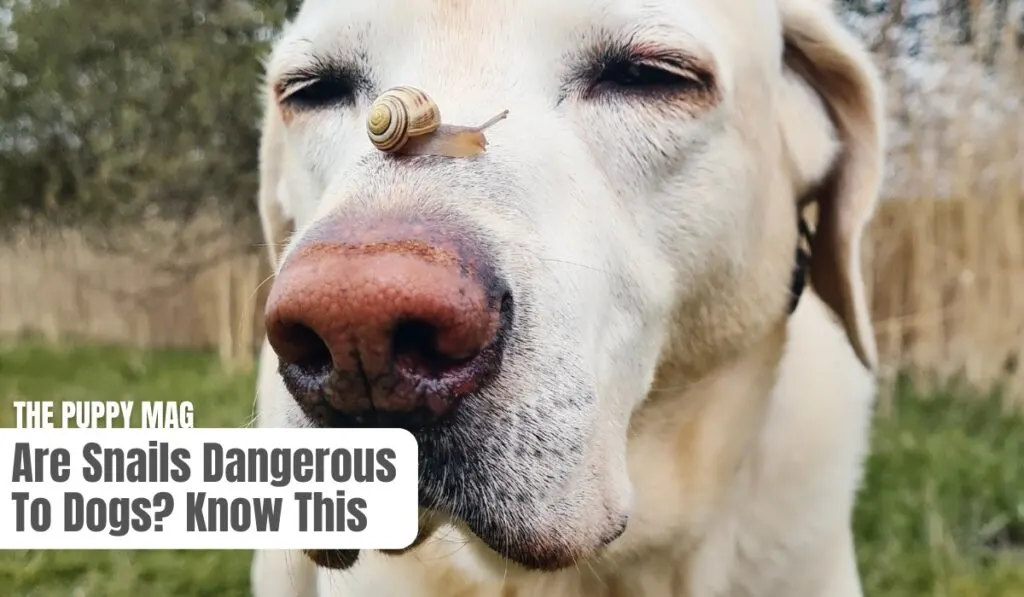
Are Snails Dangerous To Dogs?
The truth is, not really.
Well, they can be, but not in the way other animals pose threats to dogs.
Snails themselves can’t physically attack or hurt a dog, nor can they bite a dog. The only way in which they are “dangerous” is if they carry certain parasites, AND the dog eats the snail.
Not all snails carry these nasty parasites, and not all dogs decide to actually eat a snail. So when considering these to factors, snails are not really high up on the list of dangers to dogs. Still, we’ll run through the most “dangerous” snails below.
1. Giant African Land Snail
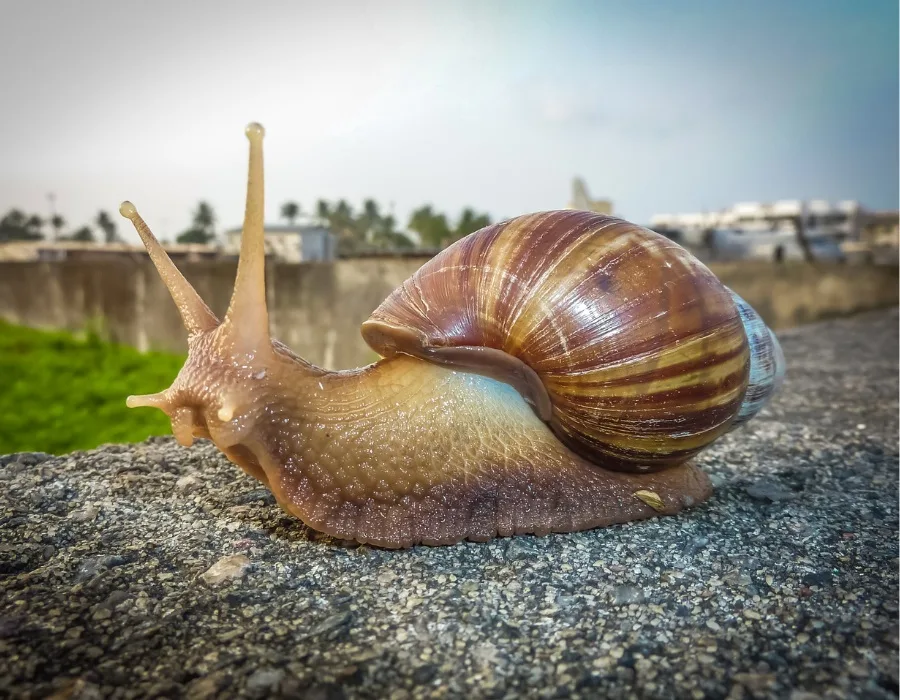
These are among the biggest snails in the world, reaching up to 7.8 inches long, so they are quite easy to spot. They are often found in tropical and subtropical regions and have been introduced to many parts of the world, including the Southern United States.
The problem with Giant African Land Snails is that they are known to carry a parasitic nematode called Angiostrongylus cantonensis, also known as rat lungworm. If a dog ingests a snail infected with this parasite, it can cause angiostrongyliasis, a serious condition affecting the brain and spinal cord. Symptoms may include difficulty walking, lethargy, and loss of appetite.
2. Brown Garden Snail
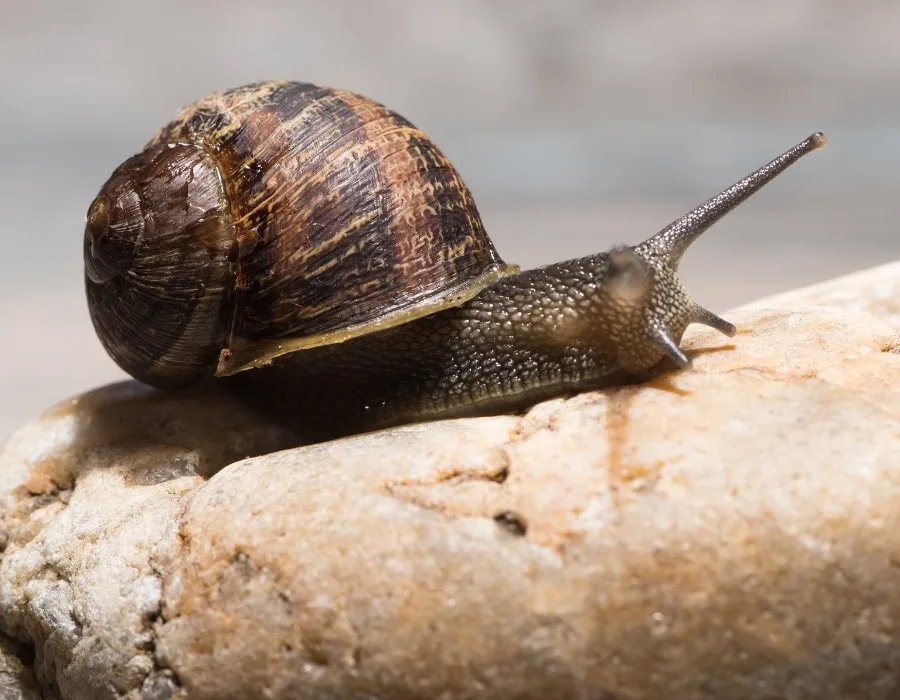
The Brown Garden Snail, native to Europe but now found worldwide, is a common sight in many gardens. It’s smaller than the Giant African Land Snail, typically measuring 1 inch in diameter, with a characteristic brown spiral shell.
Like the Giant African Land Snail, the Brown Garden Snail can carry the rat lungworm parasite. If your dog accidentally consumes this snail, it could develop the same symptoms associated with angiostrongyliasis.
3. Decollate Snail
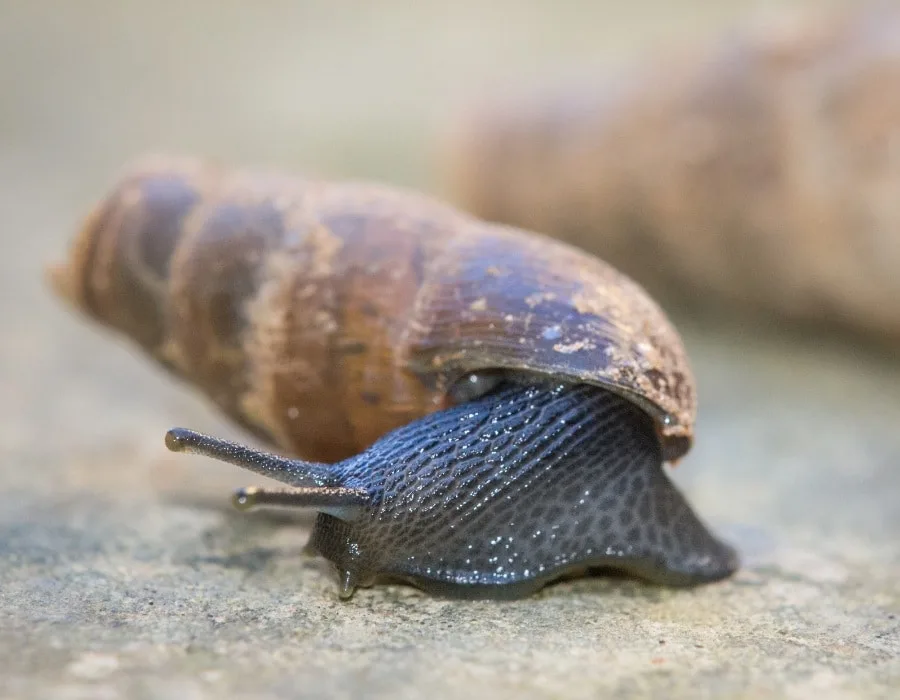
Decollate snails, native to the Mediterranean and now found in Southern California and Texas, are cone-shaped and usually about 1-2 inches long. They’re a common sight in gardens and green spaces.
These snails can carry multiple types of parasites, including lungworm, which can cause respiratory problems in dogs, such as coughing, breathing difficulties, and general weakness.
4. Rosy Wolf Snail
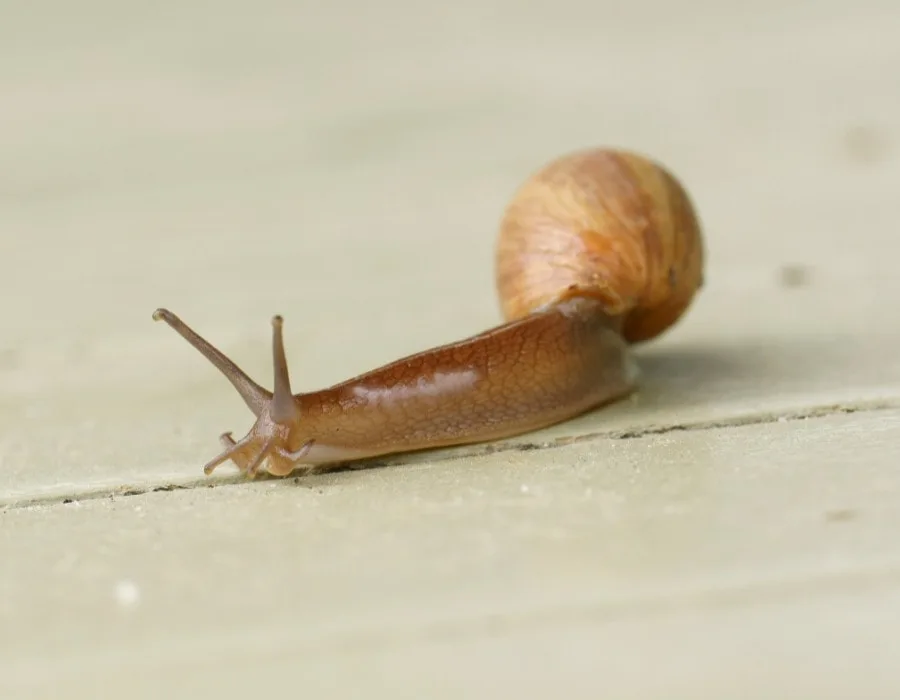
The Rosy Wolf Snail, also known as the cannibal snail, is native to the Southeastern United States. It’s not a very large snail, but it’s unique due to its pinkish-brown color and aggressive nature (it’s known to eat other snails).
This snail species can also carry the dangerous lungworm parasite, posing a significant risk to dogs that ingest them.
5. New Zealand Mud Snail
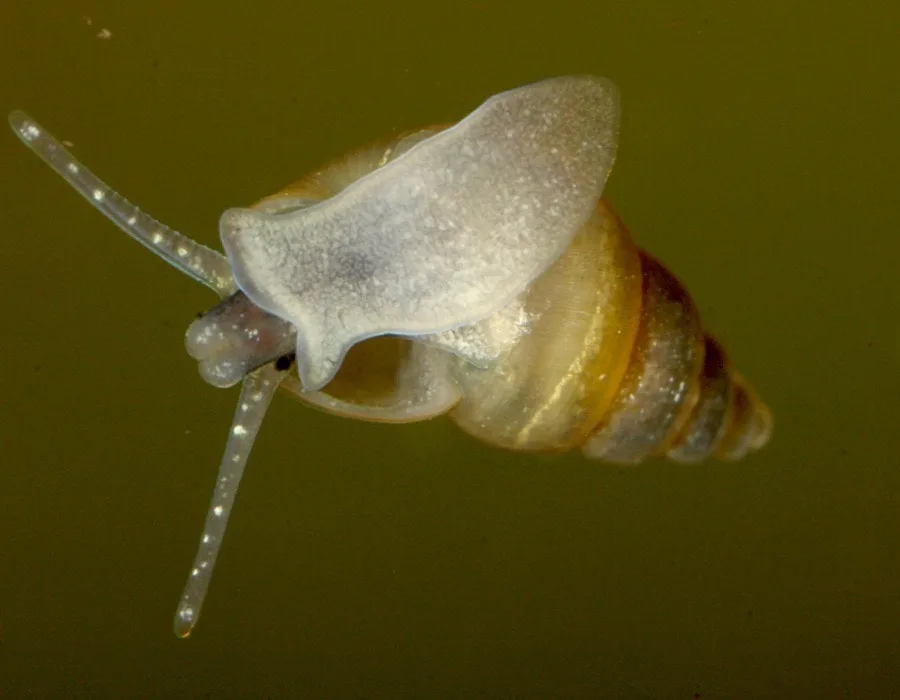
This small snail is only about 1/8 inch long and has a brown or black shell. Although native to New Zealand, it has been introduced to many other parts of the world, including the U.S., Australia, Europe, and Asia.
The New Zealand Mud Snail is known to carry a parasitic fluke that can cause a disease called cercarial dermatitis, also known as “swimmer’s itch.” While this condition is usually associated with human swimmers, it can also affect dogs that swim in infested waters.
6. Apple Snail
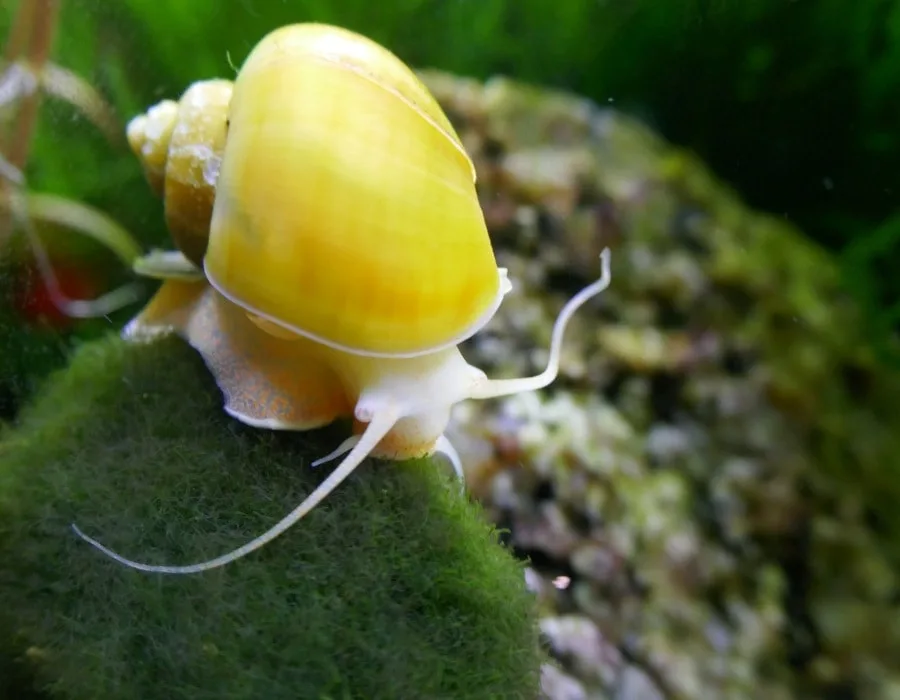
Apple Snails are large aquatic snails native to South America but can now be found in various parts of the world. They can reach up to 6 inches in diameter and come in various colors, from gold to blue, and even zebra-striped.
These snails can host the rat lungworm, which, if consumed by dogs, can cause severe neurological symptoms. These snails pose a higher risk for dogs that live near bodies of water where Apple Snails may be present.
Remember, it’s important to supervise your dogs while they’re outside and discourage them from eating snails. If you suspect your dog has ingested a snail, particularly in an area where these harmful species are prevalent, be sure to contact your vet immediately. Keep an eye on your furry friend and stay informed to keep them safe and healthy!
Can a Snail Kill a Dog?
While there aren’t any snails that can directly kill a dog through venom or poison, certain snails carry parasites that can cause severe illness in dogs if ingested.
The rat lungworm, for example, is a common parasite found in some snail species. If a dog eats an infected snail, the worm can migrate to the brain, leading to angiostrongyliasis, a serious disease that affects the brain and spinal cord. Left untreated, angiostrongyliasis can potentially be fatal.
However, it’s essential to note that not all snails carry this parasite, and not every dog that consumes a snail will get sick. Furthermore, timely veterinary care can effectively treat most parasitic infections. T
How Would a Dog Get Sick From a Snail?
It’s essential to clarify that snails aren’t inherently toxic or poisonous to dogs. The danger comes from the parasites and bacteria they can carry, particularly the rat lungworm (Angiostrongylus cantonensis).
This parasite is commonly found in snails and slugs, and when a dog eats an infected snail, the parasite can pass into the dog’s system.
Here’s how it happens:
- The life cycle of the rat lungworm begins when it lays its eggs in the lungs of rats (hence the name). The eggs mature into larvae, which the rat then expels through its feces.
- Snails and slugs come into contact with the rat feces and inadvertently consume the larvae, which continue to mature inside the snail’s body.
- If a dog eats a snail (or slug) infected with these mature larvae, the larvae are ingested and migrate to the dog’s brain, where they mature into adult worms.
- Once matured, these adult worms lay eggs that travel to the dog’s heart and lungs, causing significant damage and leading to a disease known as angiostrongyliasis.
So, it’s not a poison or toxin that the snail produces, but rather a parasitic infection that is passed to the dog through ingestion. This is why it’s so important to discourage dogs from eating snails and to keep your garden and yard free from both snails and rat feces to limit the chances of infection.
Symptoms to watch out for:
- Lethargy
- Loss of appetite
- Coughing
- Difficulty breathing
- Neurological problems like difficulty walking
- Abnormal gait.
If you suspect your dog may have ingested a snail and is showing any of these symptoms, contact your vet immediately. Early treatment is essential in mitigating the damage caused by this parasite.
What To Do When Your Dog Interacts With a Snail?
If your dog interacts with a snail, there’s typically no need to panic.
When we say interact, we mean sniffing, licking, or even putting it in their mouth (but not eating it).
It’s when a dog ingests a snail—particularly a snail carrying harmful parasites—that issues can arise.
Here’s what you should do when your dog interacts with a snail:
- Interrupt and Redirect: If you catch your dog in the act of sniffing, pawing, or about to eat a snail, interrupt them immediately and redirect their attention to something else. This could be a favorite toy, a command, or a treat.
- Remove the Snail: Safely remove the snail from your dog’s reach. Remember, some snails can carry parasites harmful to humans as well, so it’s best to use gloves or a tool like a shovel to move the snail.
- Clean Up: If the snail was crushed or damaged, clean up the area thoroughly to prevent your dog from coming back to it.
- Monitor Your Dog: Keep an eye on your dog following the interaction. If your dog managed to ingest the snail, watch for symptoms such as coughing, trouble breathing, lethargy, loss of appetite, or abnormal movements. These could be signs of a parasitic infection.
- Consult a Vet If Needed: If your dog shows any symptoms of illness after ingesting a snail, contact your vet immediately. The quicker a potential parasitic infection is treated, the better the prognosis for your dog.
- Prevention: To avoid any potential health issues, it’s best to prevent your dog from interacting with snails whenever possible. Keep your yard clean and free of snails and slugs, and train your dog to avoid them. This may take time and patience, but it’s well worth it to keep your pet safe.
Remember, while it’s good to be vigilant, it’s also important to know that not all snails carry parasites, and not all dogs that ingest snails will become sick.
The risk can depend on various factors including your location, the local snail population, and more. Still, prevention is always the best course of action.
